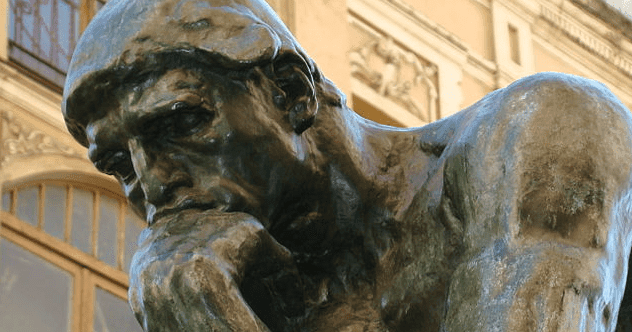Ever been absolutely certain about a memory, only to discover it never happened that way? You’re not alone! This is the core of the Mandela Effect, a fascinating phenomenon where large groups of people share the same false memory. Named after the widespread, incorrect belief that Nelson Mandela died in prison in the 1980s, these collective misrememberings continue to baffle and intrigue. Are they glimpses into alternate realities, as some suggest, or simply quirks of our complex minds? Let’s dive into 10 more mind-bending examples that will make you question everything you thought you knew!
10. Tom Cruise’s ‘Risky Business’ Shades: Real or Imagined?
The famous “Old Time Rock ‘n Roll” scene from Risky Business is etched in pop culture history. Tom Cruise’s energetic dance moves have been copied countless times. Think about those parodies – often, the person dancing wears cool sunglasses. This is because many people clearly remember Cruise wearing shades in that iconic scene. But if you watch the original movie clip, he doesn’t! And let’s not even get started on the white vs. pink shirt debate; that’s another puzzle for another day. It’s a classic case of collective misremembering.
9. Ricky Ricardo’s Famous Line: Did He Really Say It?
In the beloved 1950s sitcom I Love Lucy, many fans would swear Ricky Ricardo often exclaimed, “Lucy, you got some splainin’ to do!” It sounds so familiar, doesn’t it? However, Ricky never actually uttered those exact words in that specific order. He did say similar phrases like, “‘Splain that if you can” or “Lucy, ‘splain.” This misquote is as persistent as Star Trek’s Captain Kirk supposedly saying “Beam me up, Scotty” – another line he never actually delivered in that precise way.
8. King Henry VIII and the Phantom Turkey Leg Portrait
Picture King Henry VIII. Many people visualize a famous portrait of him at a dinner table, confidently holding a turkey leg. This image is so widespread it’s almost a historical meme. The catch? No such painting exists. There is a well-known Renaissance portrait of him holding leather gloves and the string of a scabbard, but no turkey leg in sight. This false memory has even led to claims he was the first English king to eat turkey and has influenced how he’s often depicted in media – all thanks to a painting that isn’t real.
7. The Many ‘Deaths’ of Abe Vigoda: A Recurring Hoax
Actor Abe Vigoda, known for his roles in The Godfather and Barney Miller, became legendary for something else entirely: being reported dead decades before he actually died. People Magazine first mistakenly reported his death in 1982. Five years later, another paper did the same. This sparked a long-running joke, fueling the myth of his demise. Comedian Jeff Ross often quipped at roasts, “My one regret is that Abe Vigoda isn’t alive to see this,” with Vigoda then playfully jumping up from the audience. When he truly passed in 2016, some news outlets hesitated, unsure if it was another gag.
6. Cinderella’s Castle: Entrance or Main Street Finale?
Walt Disney World’s Cinderella Castle is an iconic landmark, often redecorated for special occasions. Most visitors know it stands majestically at the end of Main Street, U.S.A. However, a surprising number of Disney fans and park-goers insist they remember the castle being the actual entrance to the Magic Kingdom park. This geographical Mandela Effect has many scratching their heads, wondering if the park’s magic extends to rearranging its most famous structure in their memories.
5. Tiananmen Square’s Tank Man: An Altered Memory?
The 1989 Tiananmen Square protests included the unforgettable image of “Tank Man” – a lone protestor bravely standing before a column of tanks. Thankfully, historical footage shows he was pulled to safety before any harm came to him. Yet, many people have a starkly different memory. They recall watching on TV as the tanks ran over the man, killing him. Some even state this was the first real-time death they witnessed. This powerful, yet incorrect, memory is a chilling example of the Mandela Effect concerning a significant historical event.
4. Billy Joel’s ‘Piano Man’: Melody or Memory in Lyrics?
Billy Joel’s “Piano Man” is a karaoke staple worldwide, with lyrics many feel they know by heart. But there’s a lyrical twist that catches many out. In the second verse, what does the old man ask the piano man to play? Most people sing, “He says, Son, can you play me a melody?” Sounds right, doesn’t it? Nope. The correct lyric is, “He says, Son, can you play me a memory?” Ironically, later in the song, the lyrics do include, “Well, we’re all in the mood for a melody,” perhaps adding to the confusion.
3. Joan Jett’s Hit: Dancing or Standing by the Record Machine?
Speaking of song lyrics, Joan Jett’s “I Love Rock ‘n’ Roll” is an infectious anthem. The opening line seems clear: “I saw him standing there by the record machine.” At least, that’s what thousands believe. However, Joan Jett actually sings, “I saw him dancing there by the record machine.” This isn’t an isolated case in music; think of The Bee Gees’ “How Deep Is Your Love,” where many hear “I really need to know” instead of the actual “I really mean to learn.”
2. The Thinker Statue: Hand on Chin or Forehead?
Auguste Rodin’s bronze sculpture, The Thinker, is instantly recognizable. It depicts a nude male figure in deep contemplation. But how exactly is he posed? Many tourists and art lovers recall his right fist pressed firmly against his forehead. However, if you look closely at the statue, his right hand isn’t in a fist, and his knuckles are pressed against his mouth, with his chin resting on the back of his hand. This discrepancy is so common that even some books describe the pose incorrectly, further muddying the waters of memory.
1. The Original: Nelson Mandela’s Premature Death Memory
And so we return to the very phenomenon that started it all: the false memory surrounding Nelson Mandela himself. Countless people across the globe share a vivid memory of Nelson Mandela dying in prison during the 1980s. They recall news reports, televised funeral clips, and even riots in cities. Some were taught about his death in school during the ‘90s and were understandably shocked when news broke of his actual passing in 2013 at age 95. This original Mandela Effect sparked numerous theories, from parallel universes to elaborate conspiracies, highlighting just how strange and widespread these collective misrememberings can be.
These ten examples barely scratch the surface of the bewildering Mandela Effect. Whether these shared false memories are glitches in our collective consciousness, evidence of parallel universes, or simply tricks our brains play, they certainly make us think. They challenge our perception of reality and the reliability of our own memories. What’s truly fascinating is how widespread these incorrect recollections can become, creating a shared history that never actually was.
Have you experienced any of these Mandela Effects, or do you have another baffling example to share? Leave your comment below and let’s discuss!










